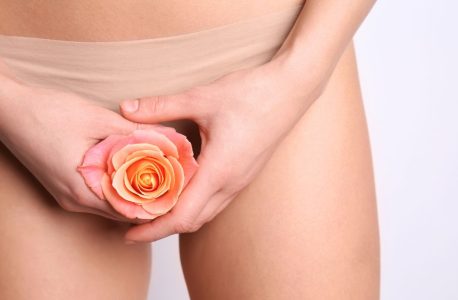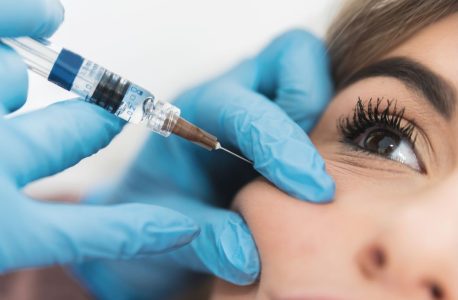Postpartum urinary incontinence (UI) is a problem that affects many new mothers. Find out how to treat it in this article.
Postpartum urinary incontinence is an uncomfortable condition that is quite common among women who have recently become mothers. Despite its discomfort, this is a problem that can be solved, as long as the woman seeks medical help and advice.
Involuntary leakage of urine by new mothers is a sign of urinary incontinence. In this context, they are usually related to changes in the pelvic floor, which is a structure that supports the bladder and controls the sphincters. These changes, caused by pregnancy and/or childbirth, make it difficult to control urination.
Women suffering from this condition sometimes experience small leaks of urine following actions as simple as coughing, sneezing, laughing or bending down to pick up an object.
If you’re facing this embarrassment, rest assured that there are ways to treat the problem and solve it once and for all.
Is postpartum urinary incontinence normal?
According to a study by the Faculty of Medicine at the University of Porto, approximately 20% of Portuguese new mothers suffer from involuntary urine leakage six months after giving birth.
Despite being a common and treatable condition and, in that sense, “normal”, postpartum urinary incontinence should be given the utmost attention by women who have this clinical situation.
So, if you are postpartum and suffer from urinary incontinence, find out more in this article about the causes and what you can do to put an end to this problem.
What are the causes of urinary incontinence after childbirth?
In general, UI can have various causes. However, it is usually related to the changes that occur during pregnancy and childbirth itself.
The effort made by the woman during childbirth, as well as the duration of labor, may or may not lead to urinary incontinence, due to the greater or lesser pressure exerted on the pelvic floor muscles and the nerves in that area.
In addition to these possible causes, instrumental delivery, episiotomy and perineal lacerations are also risk factors that can increase the likelihood of some new mothers suffering from UI.
Finally, it is possible that the nerves in the pelvic floor may have been damaged during childbirth, which can lead to urinary leakage.
What are the risk factors for postpartum urinary incontinence?
In addition to the situations mentioned above, there are other risk factors that can make UI more frequent. Some risk factors are:
- a high number of pregnancies and births
- high weight of the newborn;
- maternal obesity
- advanced maternal age;
- prolonged expulsion period.
How can I treat postpartum urinary incontinence?
If you suffer from postpartum urinary incontinence, you shouldn’t dismiss the problem, but talk to a gynecologist to assess its severity and the most appropriate treatment.
The approach to the condition of postpartum UI will always vary depending on the frequency and intensity of urinary leakage. There are, however, general measures that women in this situation should adopt, namely:
- perform Kegel exercises (specific exercises to strengthen the pelvic floor);
- avoid drinking caffeinated drinks, soft drinks and carbonated drinks;
- prioritize water intake;
- maintain a balanced weight;
- eat a diet rich in fiber;
- going to the toilet more often in order to “train” the bladder.
When adopting these measures does not help to reduce urinary leakage, it may be necessary to resort to other therapies, such as:
- Physiotherapy aimed at the perineal muscles;
- Complementary treatments to speed up the process through therapies which, by stimulating collagen production, help to improve the firmness and elasticity of the tissues, as well as restoring vaginal tone and strengthening the support of the pelvic floor muscles, including:
Intimate CO2 laser: a laser vaginal rejuvenation treatment that is also capable of treating the problem of urinary incontinence by stimulating the production of proteins such as collagen and elastin, helping to restore functionality and hydration to the tissues and muscles of the vagina;
Intimate radiofrequency: helps strengthen the tissues and muscles of the pelvic floor and therefore combat the symptoms of urinary incontinence.
When UI is associated with vaginal laxity and weakness of the muscles in the pelvic region, opting for treatments that strengthen this region (such as those mentioned above) is a very effective way of solving the problem of urinary leakage.
How to prevent urinary incontinence after pregnancy?
There are some behaviors that can help prevent postpartum urinary incontinence. These include
- not gaining excess weight during pregnancy;
- drinking plenty of water;
- eating a diet rich in fiber to avoid constipation;
- strengthening the pelvic floor with Kegel exercises.
Kegel exercises are very simple to do and you can do them lying down, standing up or sitting down. All you have to do is follow these steps:
- To identify the muscles to work, try suspending the flow of urine. The muscles you have contracted are the ones you need to exercise.
- Breathe calmly, raising your belly as you inhale and lowering it as you exhale. When you exhale, contract your pelvic floor muscles forcefully for a few seconds, as if you were preventing urine from flowing out.
- Repeat the previous step several times, holding the contraction for longer and longer.
- Do these exercises two or three times a day.
If you’re experiencing this problem, you can find the solution right near you. Visit the Living Clinic in Porto and find out which treatments are best for you. Book your appointment now!
Responsible for the treatments

Dr. Manuela Montalvão is a specialist in Gynaecology/Obstetrics, with extensive training in different areas of the specialty, including Regenerative Gynaecology (Gynaeco-aesthetics), vulvar and vaginal laser application and intimate rejuvenation.

Dr. Maria Manuel Sampaio is a specialist in Gynecology/Obstetrics at the Living Clinic and has been dedicated since 2015 to monitoring women from adolescence to menopause, including pregnancy and childbirth.
One of her main areas of intervention is Intimate Rejuvenation, aimed at improving the quality of life of women during the menopause, postpartum and beyond, through techniques aimed at improving elasticity, tone and lubrication by activating collagen production.
Schedule an Appointment
- Are you looking for more information about a specific treatment?
- Would you like to learn more about Living Clinic?
- Would you like to receive the opinion of our specialists?
- Are you interested in scheduling a consultation?






